Tamiya 1/48 Bf-109E-7
The Bf-109E-7 was the airplane the Luftwaffe should have had at the beginning of the Battle of Britain, since it was the first Bf-109 to be plumbed to carry a 300-liter drop tank, which increased its range from 660 km (410 mi)to 1,325 km (820 mi). This would have allowed the Jagdflieger to escort the Luftwaffe's bombers past the limited area of southeast England. As it was, the first of the E-7 sub-type began to show up in the Jagdgeschwadern at the end of August, just too late to have provided the cover to the bombers that might have changed the outcome of the battle the previous summer.
7./JG 26 Over Malta:
Following the decision to send the Afrika Korps to North Africa to support the Italians, the Luftwaffe and Regia Aeronautica began a major air campaign against Malta. With an infusion of additional Hurricanes to the island, the RAF was able to inflict mounting losses on their Axis opponents. 8./LG 1, lost six of their 12 Ju-88As in the space of a week.
In February 1941, 22-year old Hauptmann Joachim Müncheberg's 7./JG 26, known as the “Red Heart staffel” for their unit insignia, was transferred from northern France to Sicily to provide cover to the air campaign against Malta. The 7./JG 26 transfer was meant to reduce losses experienced by the Luftwaffe Fliegerkorps X and Regia Aeronautica bombers. The staffel arrived in Sicily a few weeks after the Axis air units had failed to sink the damaged carrier HMS Illustrious as she lay helpless in the Valetta docks following the damage inflicted by Ju-87R-2 Stukas of Fliegerkorps X and the Regia Aeronautica when the carrier escorted a Malta convoy.
Within days of their arrival at Gela, Sicility, the 12 Bf-109E-7s of Müncheberg's staffel began operations over Malta. On February 12, they bounced six Hurricanes from 261 Squadron, shooting down three. Over the next five days, the Messerschmitts cut such a swathe through the Hurricanes that the morale of 261 Squadron was shattered, something it would never would recover from.
During the next three months, 7./JG 26 completely changed the air war over Malta, allowing Fliegerkorps X to increase its sorties from 450 in January 1941 to over 500 in March and 755 in May, while German losses fell from 21 in January to 10 in March and only six in May.
By the time 7./JG 26 left Sicily in May 1941 for service in North Africa, they had claimed 38 British aircraft, with 20 of those scored personally by Müncheberg, without loss of a single pilot. This allowed the bombers of Fliegerkorps X to destroy most of the heavy equipment in Valletta's harbor, reducing the Royal Navy's repair capability to half capacity.
As a result, the convoys that transported the Afrika Korps to Libya in February and March suffered no losses to the British. At the end of March, the Afrika Korps attacked the British forces in Libya and drove them back to the Egyptian border.
While the staffel's success was due to Müncheberg's decision to avoid combat unless the Germans had the advantages of height and numbers, often picking off stragglers, this meant that the pilots did not provide the protection to German and Italian bombers that was needed. 261 Squadron actually claimed more enemy aircraft shot down during this period than the German staffel did. On March 23, 1941, the Hurricanes claimed nine Stukas for one Hurricane lost, despite the escort by 7th Staffel. With additional losses from the AA defense, the Germans eventually switched to night attacks.
In addition to flying missions over Malta, 7./JG 26 also participated in the German invasion of Yugoslavia for two weeks in April 1941.
Müncheberg was awarded the Oak Leaves to his Knight's Cross on May 7, 1941. By the time 7./JG26 returned to France that September, his score was 48, 25 claimed in the Mediterranean theatre and amounting to almost half the total of 52 the Staffel claimed during the Mediterranean deployment. The record was all the more remarkable for the fact the Staffel experienced no losses during this period.
THE KIT
The Tamiya 1/48 Bf-109E kit was first released 20 years ago in 1998. The first release had some shape problems involving the engine cowling, which was corrected two years later, though there was never an admission from Tamiya that a mistake had been made and there is nothing on the box that indicates whether or not what is inside is the corrected kit. (Interestingly, Hasegawa had the same issues which is why smart modelers will not buy the 'J' series kits and instead concentrate on the 'Jt' boxings)
The kit offers the well-known Tamiya simplicity of production design, which is virtually guaranteed to result in an excellent model for the average plastic basher. While it does not appear to be in production at this time, the kit is commonly available at eBay and from dealers at hobby shows at attractive prices.
CONSTRUCTION
I began construction by painting the cockpit parts before assembly. The E-7 sub-type marked the changeover from using RLM 02 in the cockpit to RLM 66 Dark Grey, so I used Tamiya “German Grey” for this. I used the kit decals for the instrument panel, and applied the decal seatbelt to some lead foil I have from old wine bottles, which allowed me to install it so that it looked more realistic than merely applying the decal to the seat.
The kit can be assembled as an E-3, E-4 or E-7, with the primary differences being the cockpit canopy used, and whether one attaches the mount for the drop tank that was associated with the E-7. A tropical filter is also in the kit, though I didn't use it here because the 7./JG 26 aircraft were not so equipped. The different propeller hubs are also in the kit and I used the pointed one associated with the E-7 sub-type.
The rest of the assembly was “Tamiya easy.”
COLORS & MARKINGS
It appears that the E-7 sub-type marked the introduction of the 74/75/76 camouflage, at least at one or the other of the factories producing 109s at Erla, Regensburg or Wiener-Neustadt. I have seen color call-outs for Müncheberg's airplanes as both 71/02/65 and 74/75/76. Since it's known he flew two different 109E-7s during the Mediterranean deployment, it may be that both callouts are correct and refer to different aircraft; “white 12" was the second airplane, which would make it newer and more likely to have come from the factory in the final colors. Be that as it may, I chose to do this one in 74/75/76 due to the fact I have other Bf-109Es in 71/02/65 and 70/71/65, and I wanted visual difference. The scheme was applied freehand with a heavy side mottle, as shown in photos of this airplane. I did a “sun fade” finish in post-shading in recognition of conditions in the Mediterranean.
The kit provides the markings for Müncheberg's “White 12." Some people complain that Tamiya's kit decals are too thick, but I have never experienced any difficulty in getting them to settle down under an application of Solvaset, which is what I did here.
Since the airplane was operated in the Mediterranean, I opted for a “flat flat” finish, rather than the semi-matte/flat finish the airplane left the factory with, to give a sun faded appearance. I “muddied” the tires and the inside of the wheel wells, then attached the landing gear. I attached the canopy in the open position.
For the “serious 109 enthusiast,” the Eduard kits with their additional surface detail are the best. However, for “buildability,” the Tamiya 109E kit is only beaten by the Airfix 109E, and can be found at very reasonable prices. It makes up into a good-looking model, and for those who want a variety of 109Es to represent the myriad of paint schemes the airplane appeared in, the Tamiya kit is a good way to go. Anyone from a beginner to an advanced modeler can get an excellent result from this old warhorse.
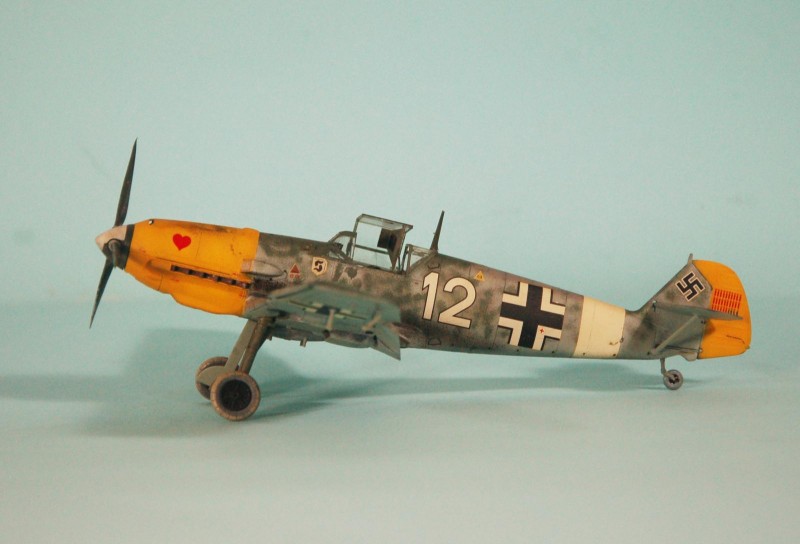
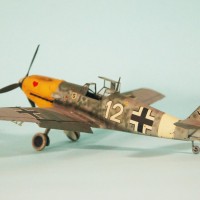
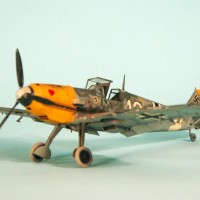
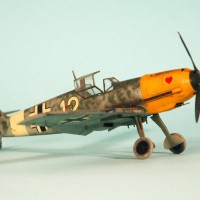

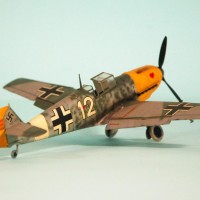
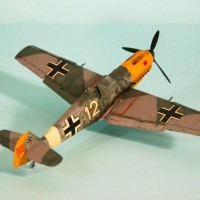
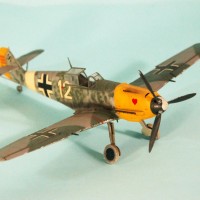
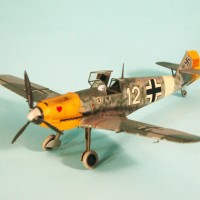
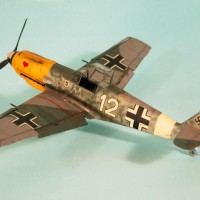
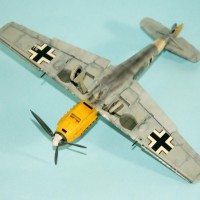
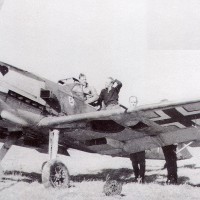

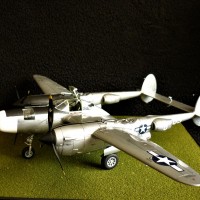
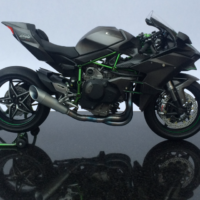


Nice all-around posting, TC...good work in ALL aspects.
Gorgeous Emil, Tom. In my opinion one of your best.
Excellent as always, Tom. Great information, too.
Tom: Superb build and great narrative, both hallmarks of your great entries here on IModeler. I always look forward to seeing your builds, and the excellent narratives that accompany them. Excellent stuff!
Looks great, I´ve never built Tamiya´s 109E, I´ll have to snag it when I go abroad.
Love the Malta story, never hear too much about the conflict. Need to pick up a kit or two
My most favored WWII plane, Beautifully done!
Tom, another great story behind the build!
I've built a couple of Tamiya's 109 E, and yes, the first one had that weird sloop on the front of the engine covers. The second one, seen on this couple of photos I added below, had the corrected shape. Also have similar experience with the Hasegawa moulds, exactly as you mention.
That second Emil I built (Tamiya) is the plane from Muncheberg wingman, Oblt. Mietusch, that bagged quite a few british aircraft during their Maltese campaign.
3 attached images. Click to enlarge.
tThat's really nice, Pedro.
super build...beautiful
Another nice one Tom. The E is my favorite 109.
Nicely done, Tom. Like you said, this kit goes together smoothly. Here are a few shots of one I recently finished in Helmut Wick's final markings. Cheers.
3 attached images. Click to enlarge.
Noice!